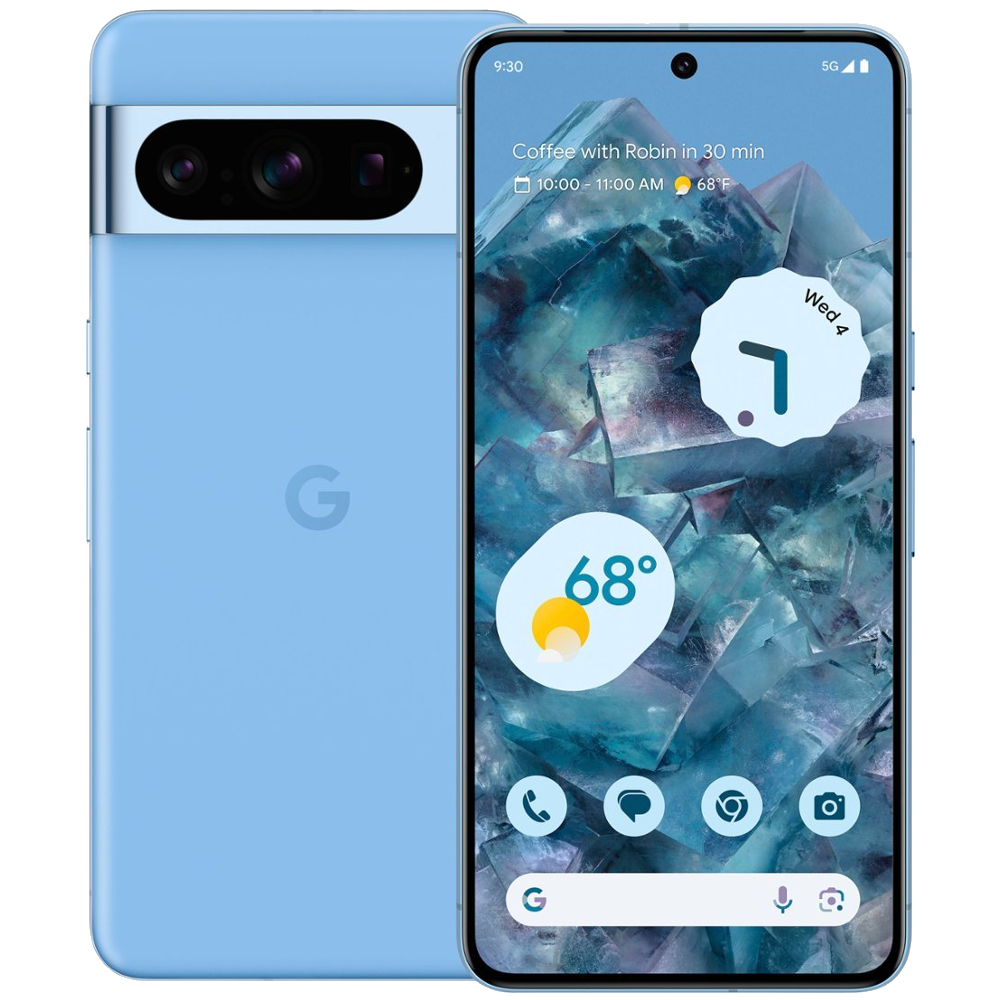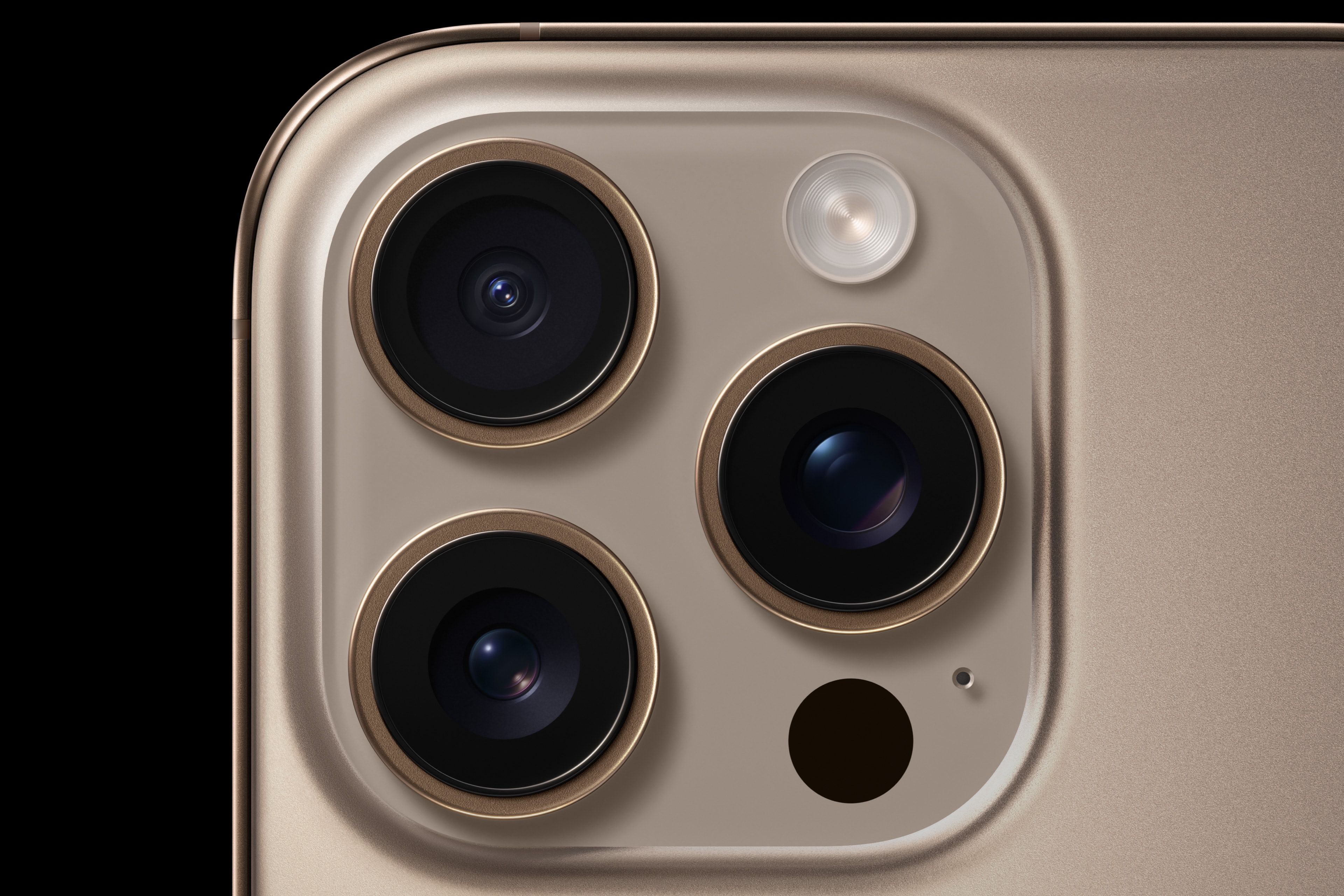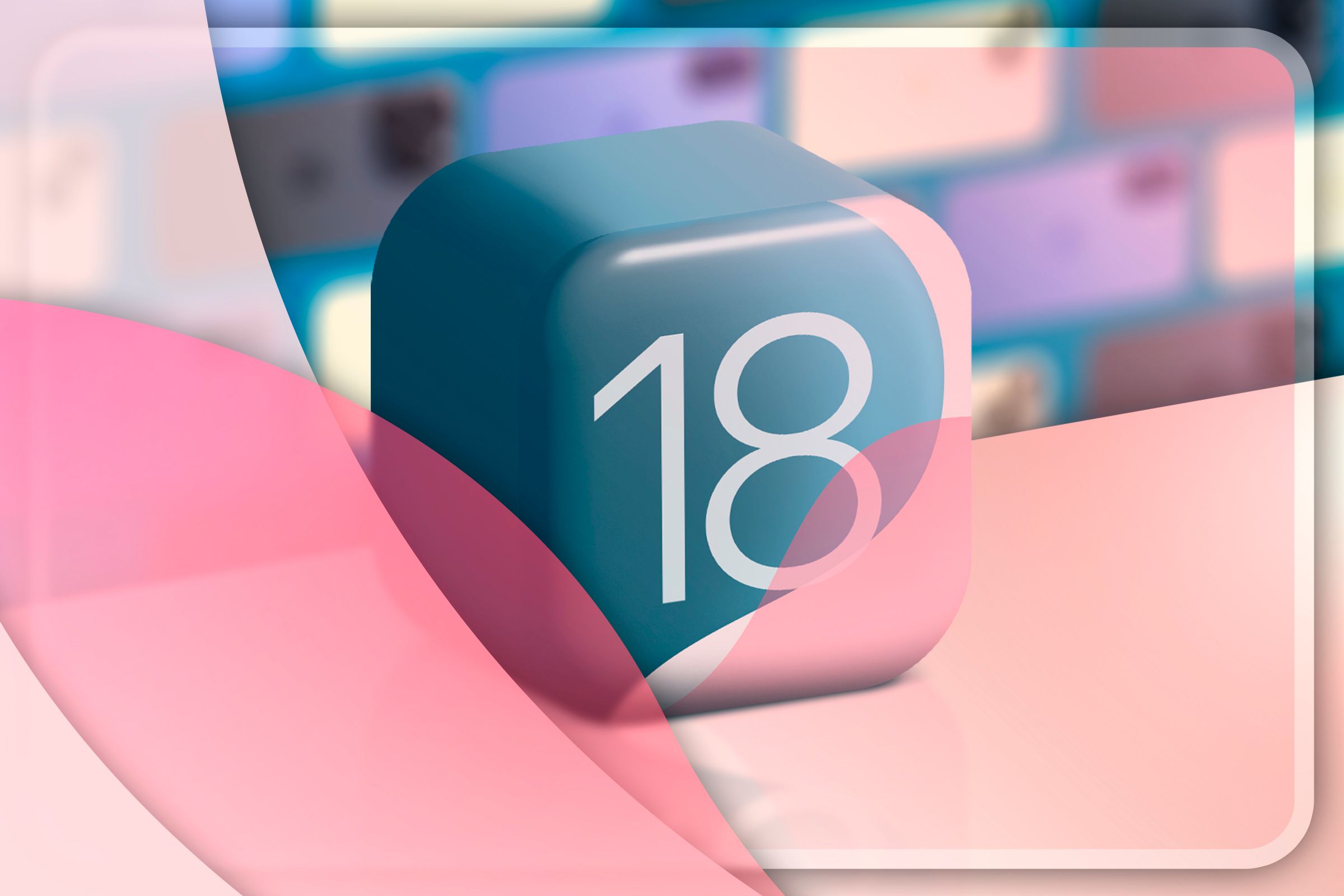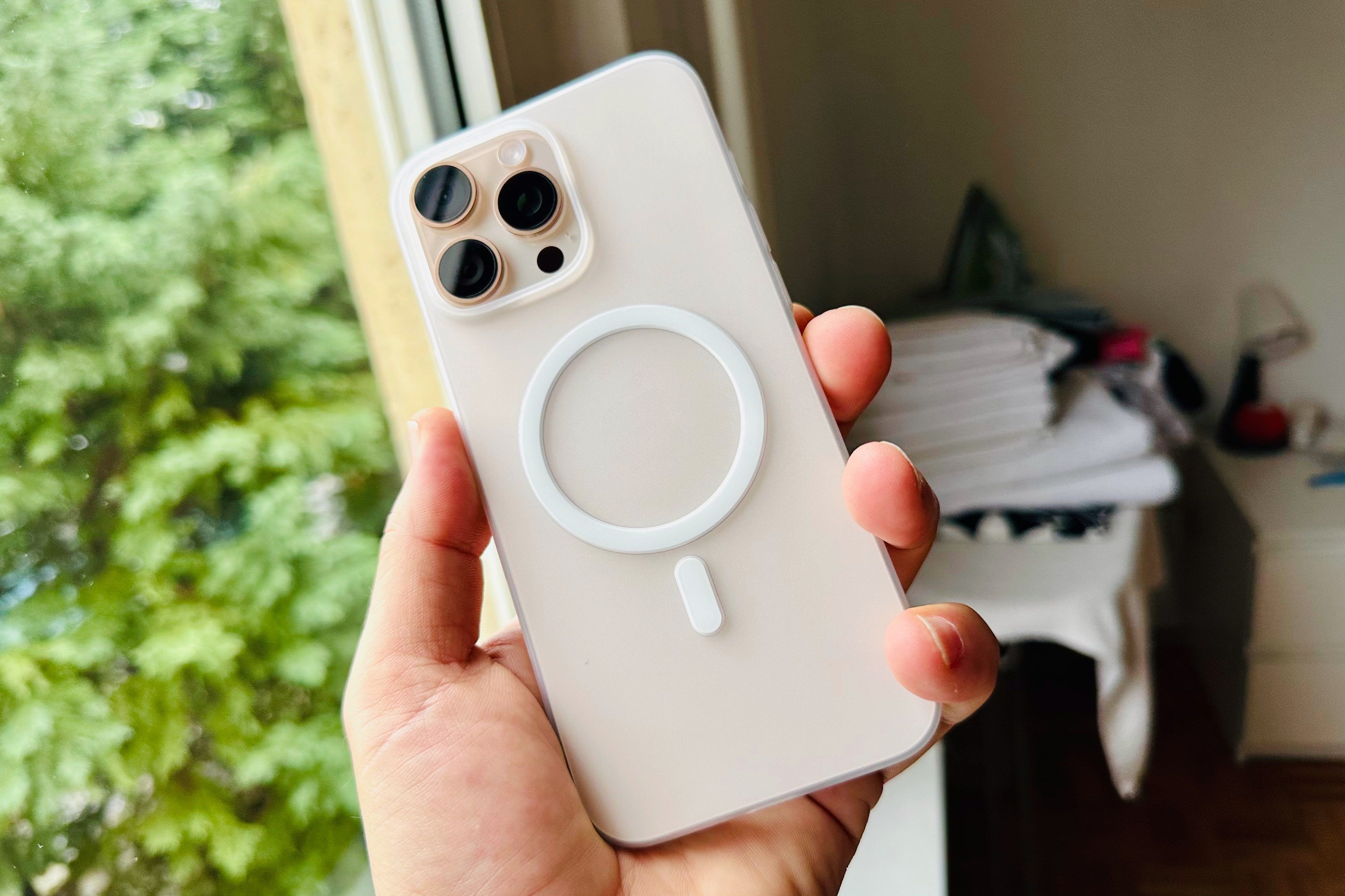Key Takeaways
- Apple’s iPhone 16 Pro comes with a 6.3-inch ProMotion (120Hz) screen, the powerful A18 Pro chip, a triple-camera setup with 5x optical zoom, and 25W MagSafe charging.
- The Pixel 8 Pro features a bigger 6.7-inch 120Hz screen, a weaker Tensor G3 SoC, a triple-camera setup with 5x optical zoom, and a bigger 5,050 mAh battery.
- Whether you should switch or not comes down to whether you like iOS or Android, and whether you’ll use the iPhone’s added power and camera features.
Google’s 2023 flagship, the Pixel 8 Pro, comes with a versatile camera setup and plenty of Google AI features, but how does it compare to the newly launched iPhone 16 Pro? Should you consider switching to Apple? Let’s find out.
Square-Shaped Camera Module vs. Horizontal Camera Visor
Over the years, Apple and Google have found their own signature designs, which includes a square-shaped triple-rear camera module for the former and a horizontal camera visor on the rear.
Even though both phones have an edge-to-edge screen, the iPhone 16 Pro has a Dynamic Island instead of the larger notch on older iPhones, while the Pixel 8 Pro sports a punch-hole notch, which is slightly less distracting for some users.
There’s no denying that the iPhone 16 Pro has a better in-hand feeling thanks to the grade-five titanium frame, but the polished aluminum frame on the Pixel 8 Pro is definitely durable. Both phones have a textured glass back. For those wondering, the iPhone 16 Pro weighs half an ounce (14g) less than the Pixel 8 Pro.
Protecting the screen on the iPhone 16 Pro is the second-generation Ceramic Shield, while the Pixel 8 Pro gets the job done with the Gorilla Glass Victus 2. Dust and water resistance remain identical on the phones, as both have an IP68 rating.
The iPhone 16 Pro offers two additional buttons over those on the Pixel 8 Pro, or any regular flagship for that matter: the Action Button and the Camera Control button. The former lets users perform tasks like enabling silent mode or invoking a Shortcut, while the latter lets them access the Camera app and shoot pictures.
The iPhone 16 Pro is available in four titanium finishes: natural, desert, black, and white. Google’s Pixel 8 Pro is available in more vibrant colors: mint, bay, obsidian, and porcelain.
Pixel 8 Pro Offers a Bigger and Brighter Screen
The Pixel 8 Pro has a 6.7-inch Super Actua display. In comparison, the iPhone 16 Pro features a 6.3-inch Super Retina XDR screen. Notice how both brands use fancy marketing jargon instead of saying the phones have an OLED display.
It might surprise you, but the Pixel 8 Pro has a brighter (2,400 nits vs. 2,000 nits) and sharper (489 ppi vs. 460 ppi) screen than the iPhone 16 Pro. Common features include higher refresh rates (up to 120Hz), support for HDR content, and always-on functionality.
What’s worth noting is that you can dim the iPhone 16 Pro’s screen all the way down to 1 nit, something that night owls will appreciate.
A18 Pro vs. Tensor G3
In our Pixel 9 Pro vs. iPhone 16 Pro comparison, we mentioned how the Tensor G4 SoC is no match for Apple’s A18 Pro SoC. Now imagine how the Tensor G3 chip on the Pixel 8 Pro stacks up, being a whole generation older.
Even though Google has stated that it isn’t running on raw performance or benchmark scores, choosing instead to focus more on the day-to-day tasks users perform on their smartphones, it’s hard not to compare the two handsets based on the performance they offer.
The A18 Pro is leaps and bounds ahead of the Tensor G3 on the Pixel 8 series. That is not to say that you’d face issues while performing daily tasks on the Pixel.
When compared, the iPhone 16 Pro would feel more responsive in most tasks. So, if raw performance matters to you, for, let’s say, editing and rendering a video or playing a video game at its highest settings without facing frame drops, the Pixel 8 Pro is no match for the iPhone 16 Pro.
Though the Pixel 8 Pro doesn’t have as much horsepower, you have to give Google some credit for equipping the device with Gemini Nano. Further, the device lets you interact with the Gemini voice assistant, which is much more capable than Google Assistant.
Moreover, the hardware optimizations help Google get the best out of the Pixel 8 Pro’s chipset and redeem its position as an AI-enabled smartphone.
Both Phones Have a Similar Camera Setup
In 2023, Google equipped the Pixel 8 Pro with one of the most versatile camera systems on a smartphone. The default sensor is a 50MP shooter, and you get a dedicated ultrawide and telephoto lens (5x optical zoom), both of which have a 48MP resolution.
In 2023, the baseline Pro iPhone didn’t have a 5x optical zoom lens as it was exclusive to the iPhone 15 Pro Max. This year, the company has included 5x optical zoom in the base iPhone 16 Pro, albeit with a lower resolution (12MP). However, like the Pixel phone, the iPhone’s primary and ultrawide cameras have a resolution of 48MP (but with smaller apertures).
Both phones can shoot macro pictures with their ultrawide cameras.
What’s worth noting is that the Pixel 8 Pro’s ultrawide sensor has a wider field of view. Similarly, the phone provides Super Res Zoom (up to 30x), which is higher than what the iPhone offers. Both phones have a wide selfie camera with autofocus (12MP on the iPhone vs. 10.5MP on the Pixel).
The Pixel also flaunts several AI-based photo editing features, including Magic Editor, Magic Eraser, Best Take, Photo Unblur, Video Boost, and Audio Magic Eraser. Meanwhile, the iPhone 16 Pro users are still waiting for Apple Intelligence.
With their capable processors and camera sensors, both phones can record 4K videos at 60 fps. However, the iPhone 16 Pro can record 4K videos at 120 fps, which results in crisper slow-motion videos. You can also adjust the playback rate of a video after shooting it, and the same goes for the audio profile (via the Audio Mix feature).
Notably, the Pixel 8 Pro has three microphones, while the iPhone 16 Pro has four microphones. The iPhone 16 Pro can also shoot Log and ProRes videos (4K at 120 fps), and if you’re a professional who can put that to good use, switching to the iPhone might make sense for you.
iOS 18 vs. Android 14
This part of the comparison depends on whether you like iOS or Android. Apple’s latest operating system, iOS 18, has already been rolled out to many iPhones, but it doesn’t include the fancy Apple Intelligence features the company showcased at WWDC 2024. Some of them will arrive with iOS 18.1, which will come in October 2024.
On the other side of the table, the Pixel 8 Pro, which currently runs on Android 14, supports several AI-based features, like Pixel Screenshots. So whether you want to draft a message on Google Messages or edit the distractions out of a picture, the smartphone already has several impressive tricks up its sleeves.
Soon, Google will push the Android 15 update, which will add a bit of freshness to your Pixel 8 Pro.
iPhone 16 Pro Offers Faster MagSafe Charging
Apple promises up to 27 hours of offline video playback on the iPhone 16 Pro, which is an improvement over last year’s iPhone 15 Pro. As far as charging is concerned, the phone charges up to 50% in around 30 minutes with the Apple’s 20W adapter. You get improved MagSafe charging speeds (25W when connected to a 30W adapter) and Qi2 wireless charging (15W) as well.
The Pixel 8 Pro, on the other hand, offers 24+ hours of battery life, which goes all the way up to 72 hours with the Extreme Battery Saver mode. The phone charges up to 50% in about 30 minutes with Google’s 30W USB-C charger. However, it only supports Qi wireless charging.
Both phones feature a USB 3 Type-C port.
Both Phones Cost the Same
Apple sells the baseline iPhone 16 Pro, with 128GB of storage, for $999.
Google’s Pixel 8 Pro, with 128GB of storage, is also available at $999 on the company’s official website.
|
iPhone 16 Pro |
Pixel 8 Pro |
|
|
128GB |
$999 |
$999 |
|
256GB |
$1,099 |
$1,059 |
|
512GB |
$1,299 |
$1,179 |
|
1TB |
$1,499 |
$1,399 |
So, should you switch to Apple? Well, it depends. The Pixel 8 Pro is a capable smartphone and can easily last you a couple of years before you’ll need to upgrade. Further, switching from Android to iOS is a headache in itself, so unless you’re willing to take on a weeks-long journey, stick with the Pixel 8 Pro.
Get the iPhone 16 Pro if you want a phone with exceptional raw performance. Professionals or creators who edit videos on their smartphones could really benefit by switching to Apple. But that seems to be the only valid reason.
-

Apple iPhone 16 Pro
A version of Apple’s newest iPhone with a larger screen featuring a camera button, a programmable action button, and artificial intelligence features.
-

Google Pixel 8 Pro
$725 $999 Save $274
The Google Pixel 8 Pro includes the search giant’s latest CPU, the Tensor G3, is among the best smartphone cameras on the market, and has some of the best AI-powered features.













